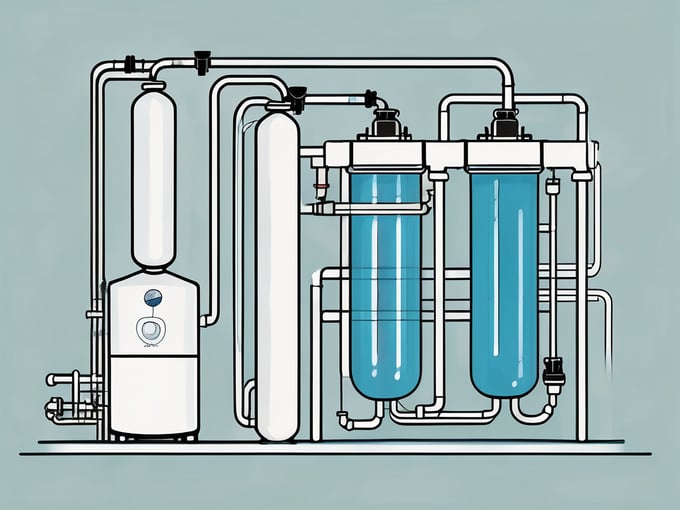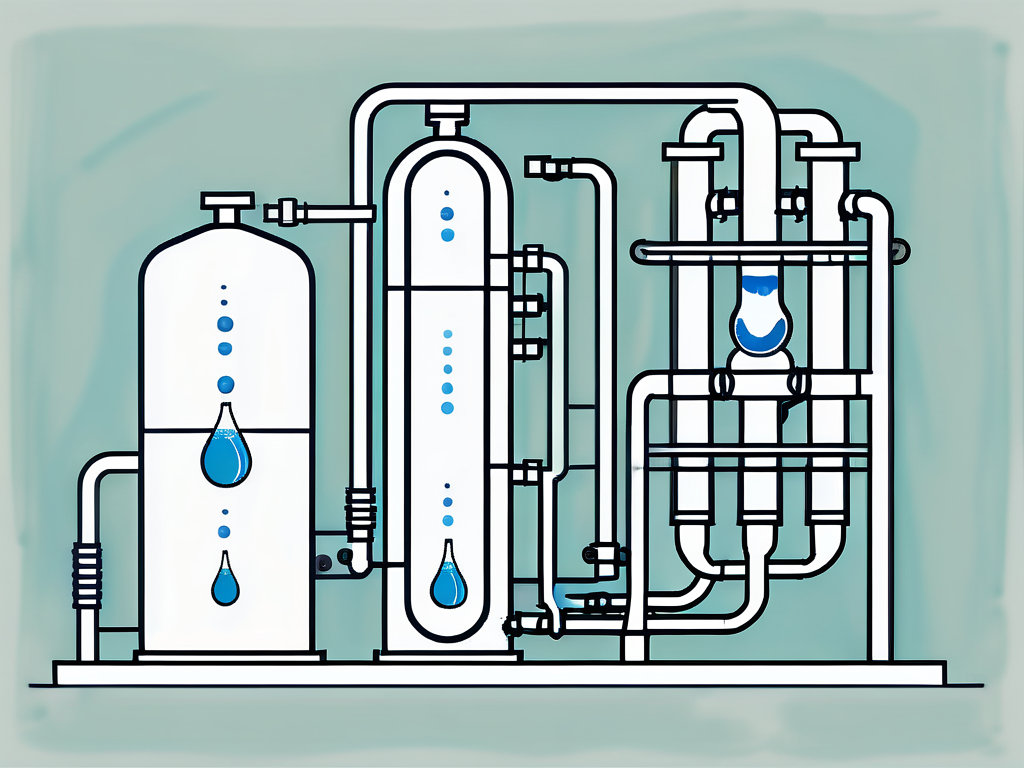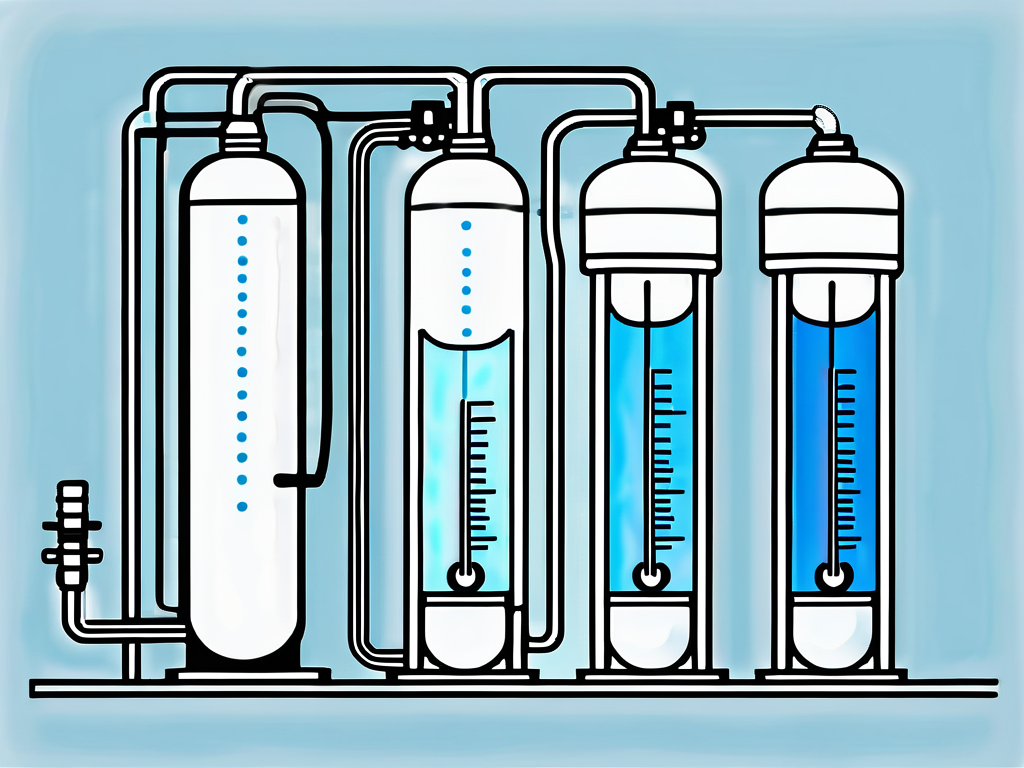
Reverse Osmosis: Wastewater Treatment Explained
Reverse osmosis is a critical process in the field of wastewater treatment, providing a high level of purification that can render wastewater safe for reuse or discharge. This article delves into the intricate details of the reverse osmosis process, its applications in wastewater treatment, and the various factors that influence its effectiveness.
Understanding the reverse osmosis process requires a grasp of the principles of osmosis, the natural movement of solvent from an area of low solute concentration to an area of high solute concentration. Reverse osmosis, as the name implies, is the process of reversing this natural flow using pressure. This article will guide you through the technicalities of this process, its applications, and its significance in wastewater treatment.
Principles of Reverse Osmosis
Reverse osmosis is a pressure-driven membrane separation process. It involves the application of pressure to a solution to overcome the natural osmotic pressure, causing water to move from an area of high solute concentration to an area of low solute concentration. This effectively separates the solutes (contaminants) from the solvent (water).

The process relies on a semi-permeable membrane, which allows water molecules to pass through while blocking larger solute particles. The result is a stream of purified water (permeate) and a concentrated waste stream (concentrate or brine).
Role of Semi-Permeable Membranes
The semi-permeable membrane is the heart of the reverse osmosis process. It is typically made of thin-film composite (TFC) or cellulose triacetate (CTA) materials. The membrane's pores are small enough to allow water molecules to pass through while blocking larger solute particles.
The effectiveness of the membrane in rejecting contaminants is measured in terms of its rejection coefficient. This value indicates the percentage of a particular solute that the membrane can reject. The higher the rejection coefficient, the more effective the membrane is at purifying water.
Importance of Applied Pressure
The pressure applied to the feed water plays a crucial role in the reverse osmosis process. It must be sufficient to overcome the osmotic pressure of the solution, which is the pressure required to prevent water from naturally flowing across the membrane due to osmosis.
The required pressure depends on the concentration and type of solutes in the feed water. Higher solute concentrations or solutes with higher osmotic pressures require greater applied pressures. The pressure also influences the rate of water production and the rejection of contaminants.
Applications of Reverse Osmosis in Wastewater Treatment
Reverse osmosis is widely used in wastewater treatment for its ability to remove a broad range of contaminants. It can effectively remove dissolved solids, organic compounds, bacteria, viruses, and other microorganisms, making it suitable for treating municipal and industrial wastewater.
The treated water can be reused for various purposes, such as irrigation, industrial processes, or even potable water supply, depending on the level of treatment. The concentrate or brine, containing the rejected contaminants, is typically disposed of or further treated.
Treatment of Municipal Wastewater
Reverse osmosis is increasingly being used for the treatment of municipal wastewater. It can effectively remove contaminants such as nutrients (nitrogen and phosphorus), organic matter, and pathogens, which are common in municipal wastewater.
The treated water can be safely discharged into the environment or reused for non-potable applications, such as irrigation or toilet flushing. In some cases, further treatment can render the water suitable for potable reuse, contributing to water sustainability in water-scarce regions.
Treatment of Industrial Wastewater
Industrial wastewater often contains a variety of contaminants, including heavy metals, organic compounds, and salts. Reverse osmosis can effectively remove these contaminants, making it a popular choice for industrial wastewater treatment.
The treated water can be reused within the industry, reducing water consumption and discharge. The concentrate can be further treated or safely disposed of, depending on the nature of the contaminants.
Factors Influencing the Effectiveness of Reverse Osmosis
Several factors influence the effectiveness of the reverse osmosis process. These include the quality of the feed water, the type and condition of the membrane, the applied pressure, and the operation parameters.

Understanding these factors is crucial for optimizing the process and ensuring the desired level of water purification. This section will delve into these factors and their impact on the reverse osmosis process.
Feed Water Quality
The quality of the feed water significantly influences the effectiveness of the reverse osmosis process. High concentrations of solutes can increase the osmotic pressure, requiring higher applied pressures. Certain solutes, such as salts, can also scale or foul the membrane, reducing its performance.
Pre-treatment processes, such as filtration or softening, are often used to improve the feed water quality. These processes can remove particulates, reduce hardness, and adjust the pH, enhancing the performance and lifespan of the reverse osmosis system.
Membrane Type and Condition
The type and condition of the membrane play a crucial role in the reverse osmosis process. Different membrane materials have different rejection coefficients and durability. The condition of the membrane, including its cleanliness and integrity, also affects its performance.
Regular maintenance, including cleaning and inspection, is necessary to maintain the membrane's performance. Damaged or worn-out membranes need to be replaced to ensure the effectiveness of the process.
Applied Pressure and Operation Parameters
The applied pressure and operation parameters, such as flow rate and temperature, significantly influence the effectiveness of the reverse osmosis process. Higher pressures increase the rate of water production and the rejection of contaminants, but they also increase the energy consumption and the risk of membrane damage.
The operation parameters need to be carefully controlled to balance the process performance, energy consumption, and membrane lifespan. This requires a thorough understanding of the process and the specific requirements of the application.
Challenges and Future Directions in Reverse Osmosis
Despite its effectiveness, the reverse osmosis process faces several challenges. These include high energy consumption, membrane fouling and scaling, and the management of the concentrate. Research is ongoing to address these challenges and improve the process.
This section will discuss these challenges and the future directions in reverse osmosis for wastewater treatment, providing insights into the ongoing efforts to enhance this critical process.
Energy Consumption
Reverse osmosis is an energy-intensive process, as it requires pressure to overcome the osmotic pressure. This high energy consumption is a significant challenge, particularly in large-scale applications.
Research is ongoing to develop more energy-efficient reverse osmosis systems. This includes the development of low-energy membranes, energy recovery devices, and hybrid systems that combine reverse osmosis with other treatment processes.
Membrane Fouling and Scaling
Membrane fouling and scaling are major challenges in the reverse osmosis process. Fouling occurs when particles or biological matter accumulate on the membrane surface, while scaling occurs when salts precipitate on the membrane. Both fouling and scaling reduce the membrane's performance and lifespan.
Research is focusing on developing fouling-resistant and scaling-resistant membranes, as well as effective cleaning methods. Pre-treatment processes are also being improved to reduce the risk of fouling and scaling.
Concentrate Management
The management of the concentrate or brine is a significant challenge in the reverse osmosis process. The concentrate contains the rejected contaminants and is typically high in salinity. Safe disposal or further treatment of the concentrate is necessary to prevent environmental harm.
Research is exploring various options for concentrate management, including concentrate minimization, beneficial reuse, and safe disposal methods. These efforts aim to make the reverse osmosis process more sustainable and environmentally friendly.
Conclusion
Reverse osmosis is a powerful tool in wastewater treatment, capable of removing a wide range of contaminants and producing high-quality water for reuse or discharge. Understanding the principles, applications, and factors influencing the process is crucial for optimizing its performance and addressing its challenges.
While the process faces challenges such as high energy consumption, membrane fouling and scaling, and concentrate management, ongoing research is paving the way for more efficient, durable, and sustainable reverse osmosis systems. This continuous innovation ensures that reverse osmosis will remain a key player in wastewater treatment for years to come.



